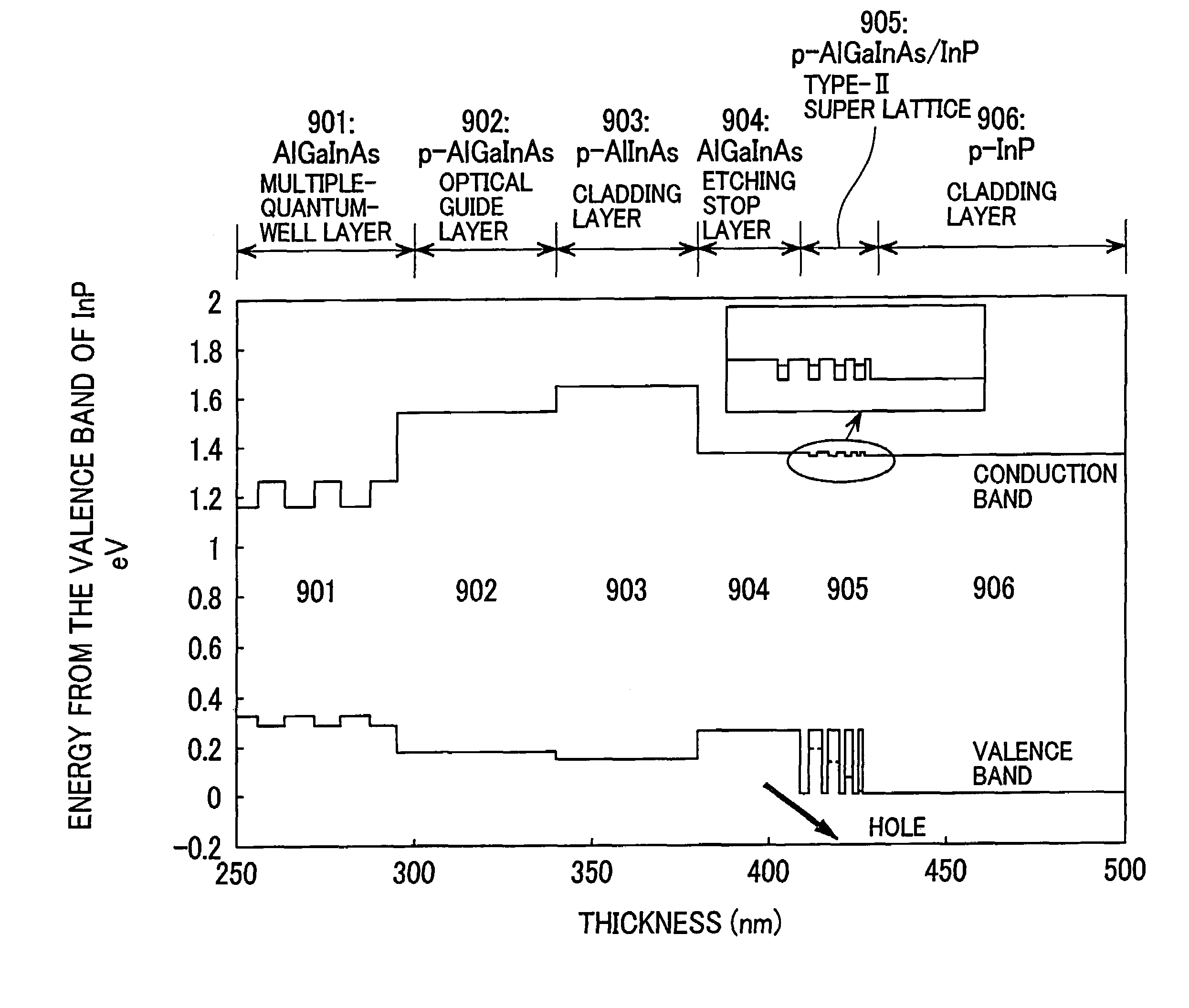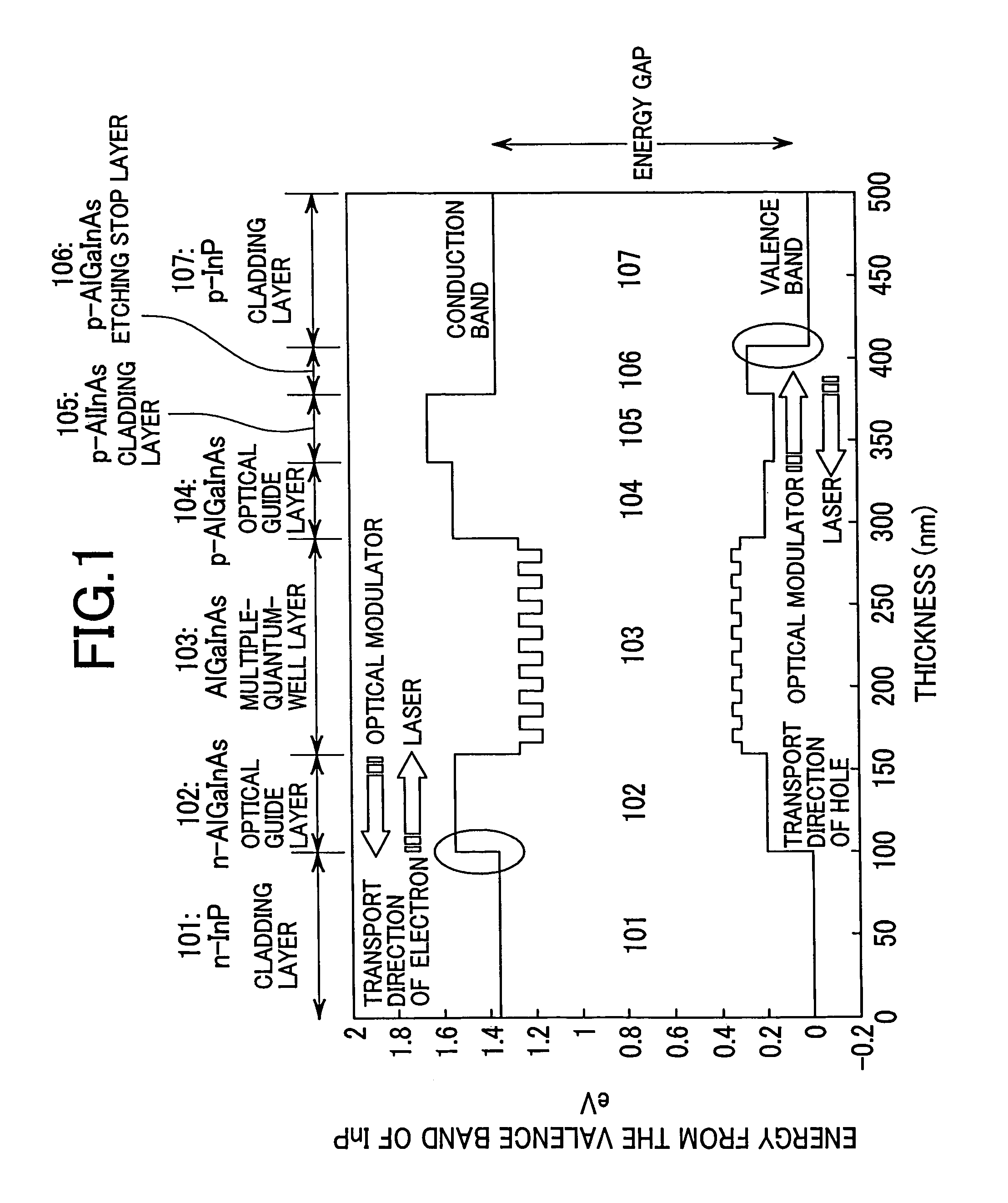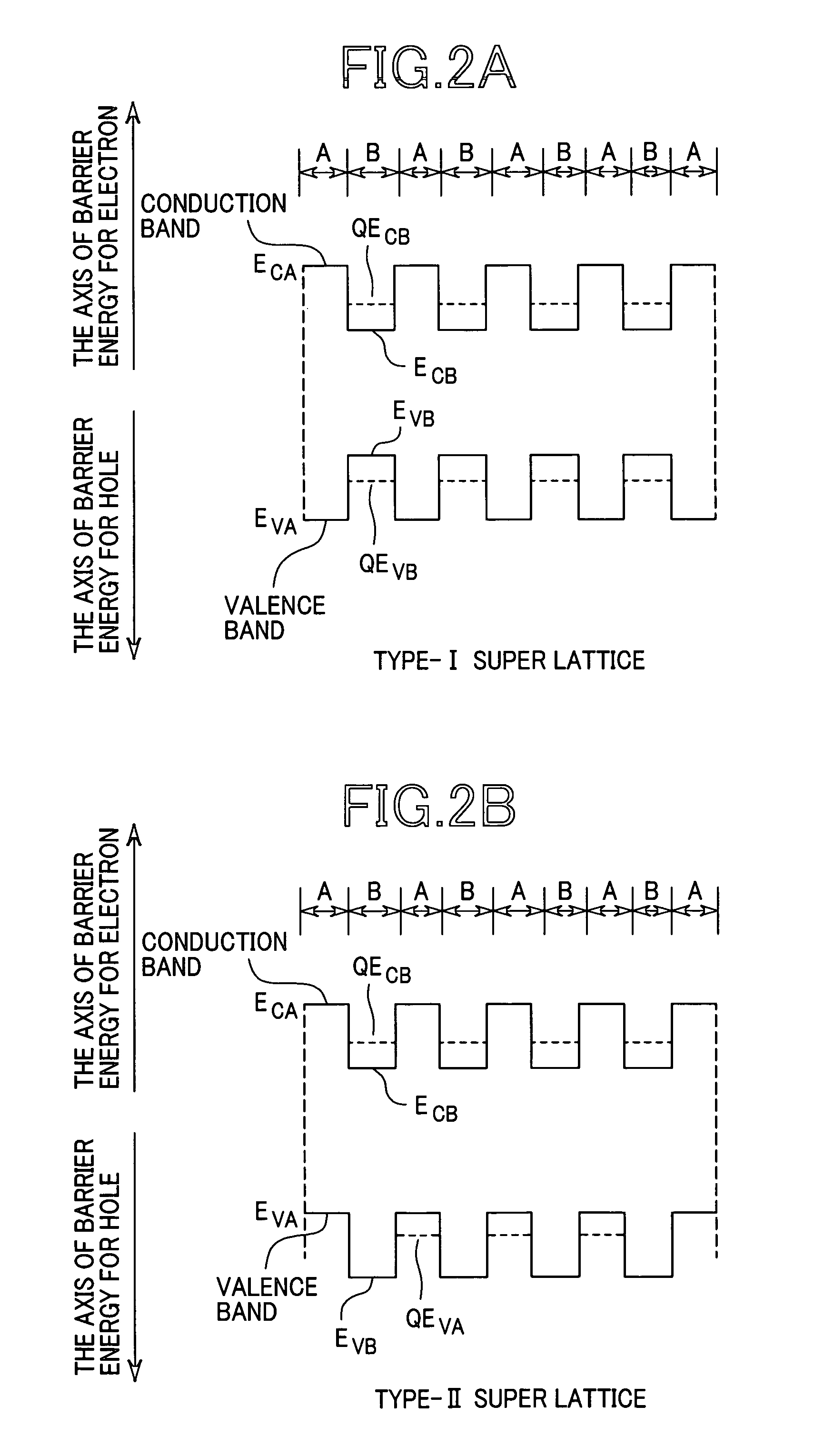Semiconductor laser device and semiconductor optical modulator
a laser device and semiconductor technology, applied in the direction of lasers, bulk negative resistance devices, semiconductor lasers, etc., can solve the problems of increased threshold current and deterioration of device characteristics, and achieve the effects of reducing thickness, enhancing e, and reducing the probability of carriers being able to exist in quantum wells
- Summary
- Abstract
- Description
- Claims
- Application Information
AI Technical Summary
Benefits of technology
Problems solved by technology
Method used
Image
Examples
first embodiment
[0045]Manufacture of a low-resistance AlGaInAs electro-absorption optical modulator according to the present invention will be described in detail below as a first embodiment of the invention. A structural view of the device is shown in FIG. 8. This embodiment assumes that metal-organic chemical vapor deposition (MOCVD) is used as a growth method. In this MOCVD method, triethylgallium (TEG), trimethylindium (TMI), and trimethylaluminum (TMAl) are used as supply sources of group-III elements, and arsine (AsH3) and phosphine (PH3) are used as supply sources of group-V elements. Also, disilane (Si2H6) is used as an n-type doping gas, and dimethylzinc (DMZn), as a p-type doping gas. However, since it is possible to obtain similar effects to the present invention if a structure equivalent to the device structure described herein can be formed, the growth method and the kinds of source materials which can be used are not limited only to those described above.
[0046]An n-type InP substrate ...
second embodiment
[0049]Manufacture of a GaInNAs semiconductor laser according to the present invention will be described in detail below as a second embodiment of the invention. A structural view of the device is shown in FIG. 10. To use GaInNAs as an active layer, it is advantageous to adopt a non-equilibrium growth method during introduction of N, and in addition to the MOCVD method, a molecular beam epitaxial (MBE) method or the like is suitable as such a growth method. This embodiment assumes that gas-source MBE (GS-MBE) is used as the growth method. In the GS-MBE method, gallium (Ga) and indium (In) are used as supply sources of group-III elements, and as supply sources of group-V elements, AsH3 is used for arsenic (As) and PH3 is used for phosphorus (P). Also, silicon (Si) and beryllium (Be) are used as an n-type and a p-type doping material, respectively. If an similar doping concentration is achievable, zinc (Zn) or carbon (C) may be used as an alternative to the above p-type doping material...
PUM
 Login to View More
Login to View More Abstract
Description
Claims
Application Information
 Login to View More
Login to View More - R&D
- Intellectual Property
- Life Sciences
- Materials
- Tech Scout
- Unparalleled Data Quality
- Higher Quality Content
- 60% Fewer Hallucinations
Browse by: Latest US Patents, China's latest patents, Technical Efficacy Thesaurus, Application Domain, Technology Topic, Popular Technical Reports.
© 2025 PatSnap. All rights reserved.Legal|Privacy policy|Modern Slavery Act Transparency Statement|Sitemap|About US| Contact US: help@patsnap.com



